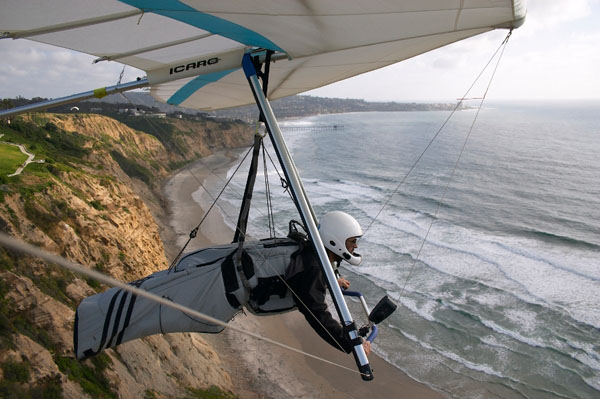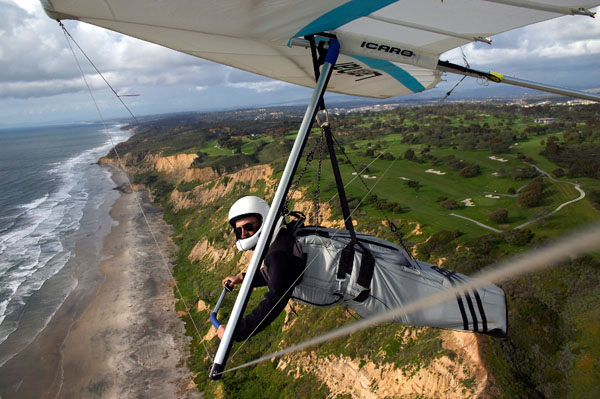One of the key requirements for good aerial images captured from hang gliders is enabling the viewer to feel a part the airborne world - as though they too are flying. An important consideration in satisfying this photographic requirement is to maintain appropriate context.
Context is provided in most cases by incorporating in to images a large part of the hang glider, at least part of the pilot's body, and significant elements of an interesting and picturesque environment.
A number of camera positions and mounts have been used over the years. Among the most successful are wing-tip mounted cameras and those mounted on extended tail booms such as the one shown in the image below which was designed by John Heiney. Pictures taken from other camera positions, such as above the wing, are bound to lack essential elements and hence leave viewers feeling more remote from the subject.
Another consideration is the extent to which a camera mount, or camera controls, are visible within the images. Wide-angle lenses are used to incorporate as much of the hang glider as possible, so any mount or remote control accessories are easily seen unless appropriate measures are taken to conceal them from the lens.
Hang gliders are carefully balanced flying machines, so any significant additional weight, particularly when positioned well off centre, needs to be counter balanced in some manner. Obviously a great deal of knowledge and flying experience is required before such modifications and additions are attempted.
Pictures by kind permission of Jerry Gillard at www.soaringfeather.com








